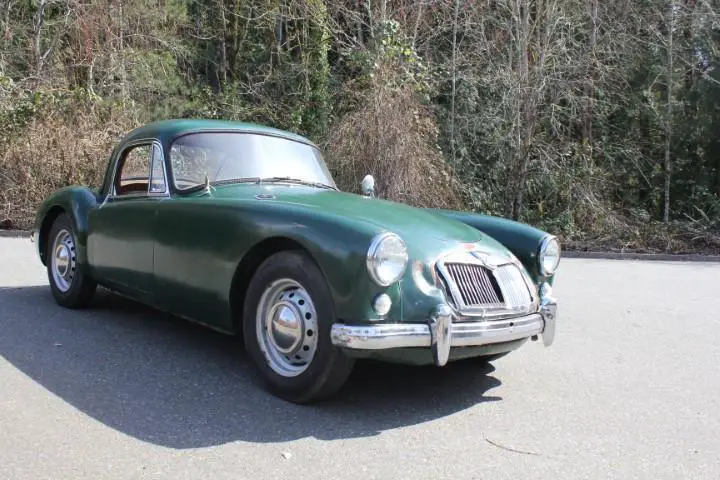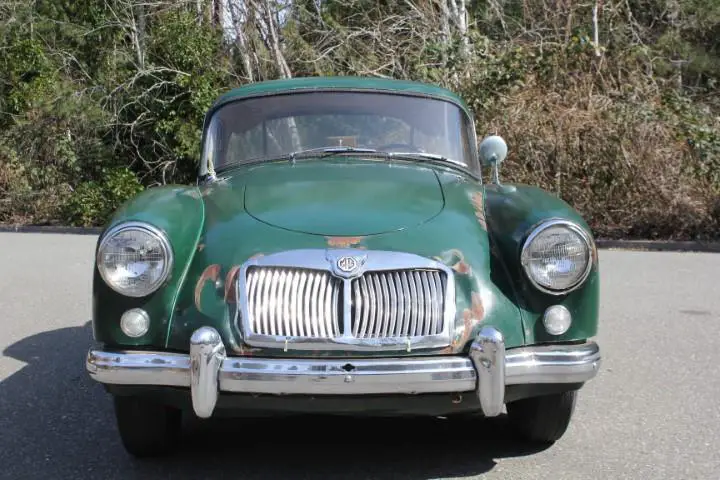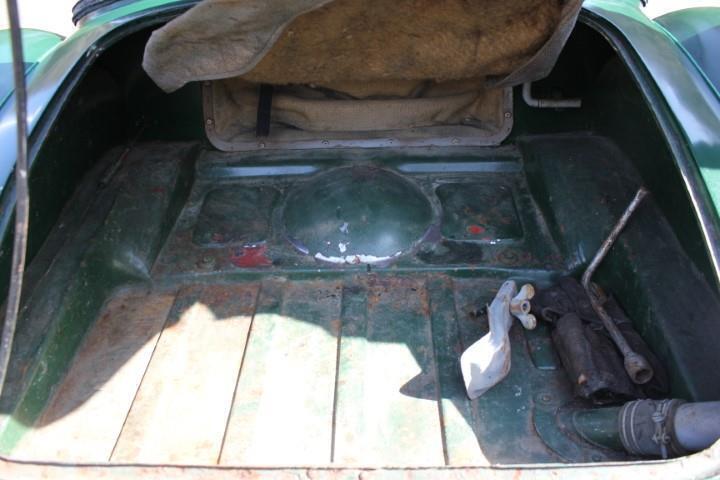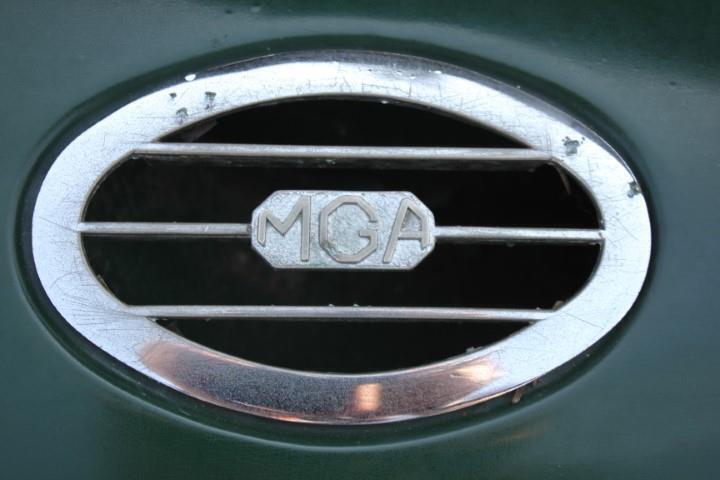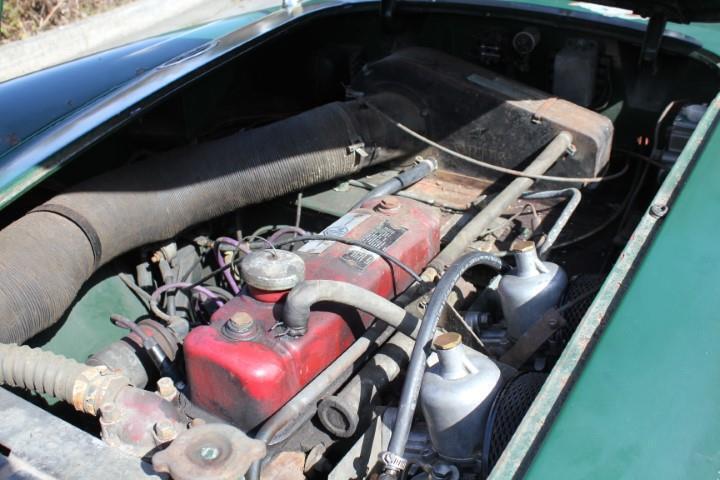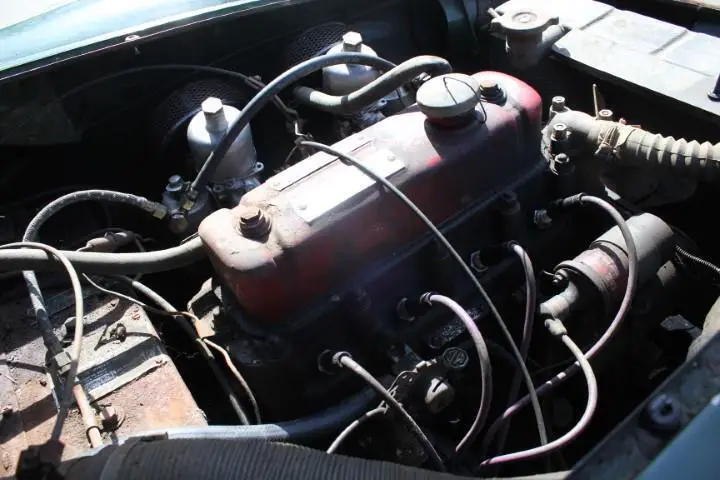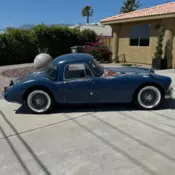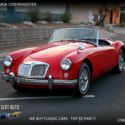1958 MG A Coupe for sale!
| Make: | MG |
| Model: | A Coupe |
| Type: | -- |
| Year: | 1958 |
| VIN: | 15GBUH27159 |
| Color: | Green |
| Engine: | -- |
| Fuel: | Gasoline |
| Transmission: | Manual |
| Drive type: | -- |
| Interior color: | -- |
| Vehicle Title: | Clean |
| Item location: | Bremerton, Washington, United States |
1958 MG A Coupe Additional Info:
This 1958 MGA Coupe is a project with rust on almost every panel it would need some extensive work and love. It does drive and shifts gears accordingly so that would not be an issue. All of the rust across the car is from paint peeling and none has rusted through which would be an easy fix with some time and a grinder. Once all is said and done and the rust is grinded or sanded off it would look great finished in its factory green colorway. The red finished interior is a good example of a well-maintained interior with there being only minor rips and tears in the seats. Carpeting is decent as well with only the driver side carpeting needing to be replaced. All dash and interior pieces function as they should with the only exception being the horn. The rest would only need a sprucing up. A great restoration opportunity and something to not overlook. I mean who nowadays can say that their project car actually runs right when they buy it. History:Enter the MGA Twin Cam, the top of the MGA food chain. While all MGAs received a revised bonnet this year—the Twin Cam’s taller engine demanded it—new “Twin Cam” emblems were added to highlight the extra power, the new and specially developed cylinder head for the trusty B-series, and the lightly modified chassis. This 1.6-liter, high-compression (9.9:1), twin-camshaft, aluminum head, twin-SU-carbureted motor was good for 108 hp. Available in both the MGA roadster and coupe, the twin-cam engine offered performance so impressive that Girling four-wheel disc brakes were fitted as standard. Center-lock Dunlop wheels replaced the stock four-lug steel wheels or optional wires, while a vinyl-covered dash face and unique seats set the interior apart.The twin-cam engine unfortunately carries a mixed legacy. Although intended as an engine upgrade for racers and knowledgeable performance enthusiasts, MG’s most exotic powerplant found itself in the hands of owners with no experience with temperamental engines. Early issues with detonation (and subsequent engine failure) were later addressed with lower-compression pistons (8.3:1) and modified ignition timing, at the expense of a few horsepower. In this trim, Twin Cams became far more reliable, but the changes were too late—the reputation was set, and sales never really took off.
This 1958 MGA Coupe is a project with rust on almost every panel it would need some extensive work and love. It does drive and shifts gears accordingly so that would not be an issue. All of the rust across the car is from paint peeling and none has rusted through which would be an easy fix with some time and a grinder. Once all is said and done and the rust is grinded or sanded off it would look great finished in its factory green colorway. The red finished interior is a good example of a well-maintained interior with there being only minor rips and tears in the seats. Carpeting is decent as well with only the driver side carpeting needing to be replaced. All dash and interior pieces function as they should with the only exception being the horn. The rest would only need a sprucing up. A great restoration opportunity and something to not overlook. I mean who nowadays can say that their project car actually runs right when they buy it.
History:
Enter the MGA Twin Cam, the top of the MGA food chain. While all MGAs received a revised bonnet this year—the Twin Cam’s taller engine demanded it—new “Twin Cam” emblems were added to highlight the extra power, the new and specially developed cylinder head for the trusty B-series, and the lightly modified chassis. This 1.6-liter, high-compression (9.9:1), twin-camshaft, aluminum head, twin-SU-carbureted motor was good for 108 hp. Available in both the MGA roadster and coupe, the twin-cam engine offered performance so impressive that Girling four-wheel disc brakes were fitted as standard. Center-lock Dunlop wheels replaced the stock four-lug steel wheels or optional wires, while a vinyl-covered dash face and unique seats set the interior apart.
The twin-cam engine unfortunately carries a mixed legacy. Although intended as an engine upgrade for racers and knowledgeable performance enthusiasts, MG’s most exotic powerplant found itself in the hands of owners with no experience with temperamental engines. Early issues with detonation (and subsequent engine failure) were later addressed with lower-compression pistons (8.3:1) and modified ignition timing, at the expense of a few horsepower. In this trim, Twin Cams became far more reliable, but the changes were too late—the reputation was set, and sales never really took off.
